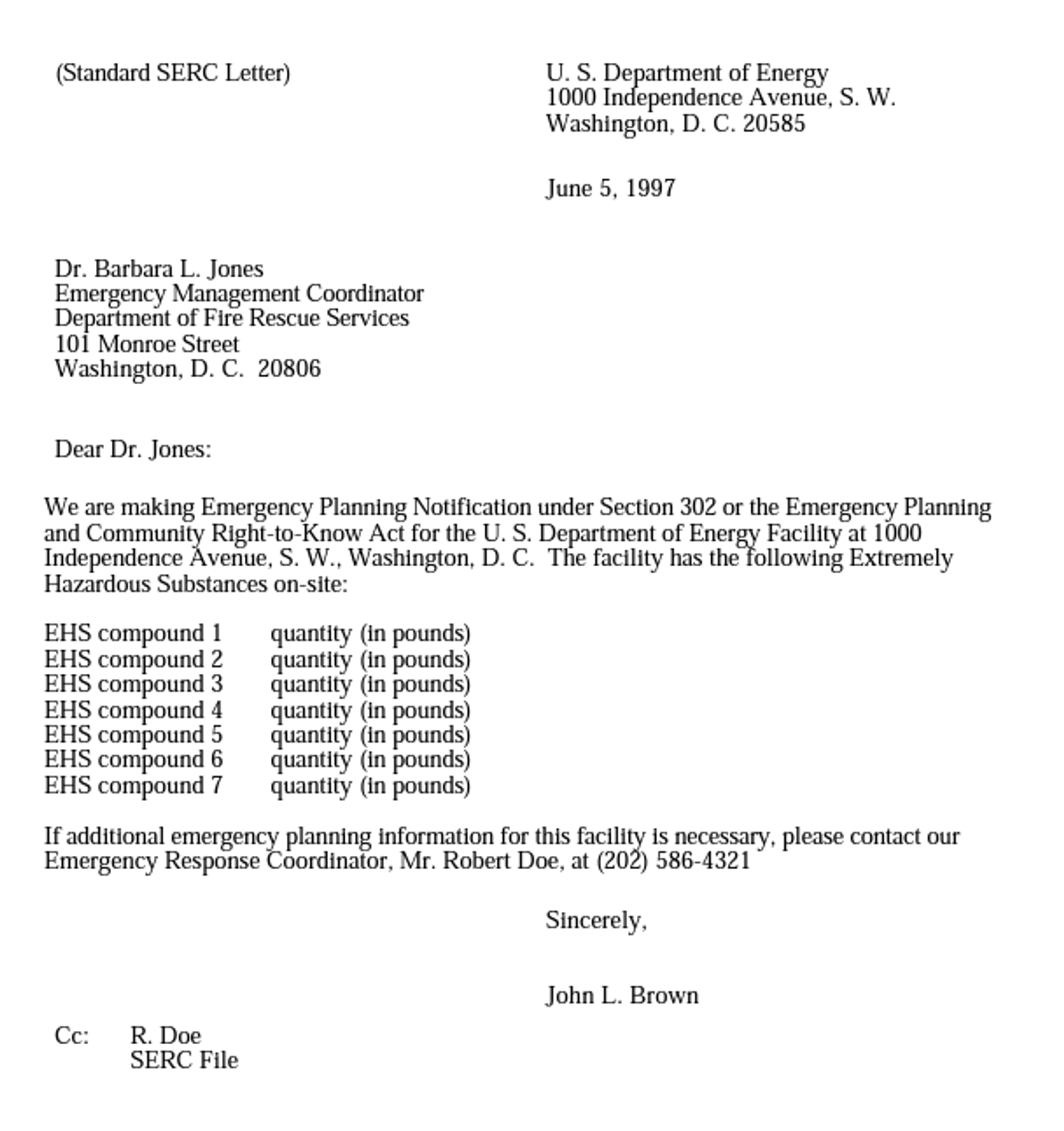EPCRA Section 302: Emergency Planning Notification
A facility is required to comply with the emergency planning regulations outlined in Section 302 of the Emergency Planning and Community Right-to-Know Act (EPCRA) if it possesses an Extremely Hazardous Substance (EHS) at any point during the reporting year in a quantity equal to or exceeding the Threshold Planning Quantity (TPQ).
The Environmental Protection Agency (EPA) maintains a comprehensive list of EHSs known as the "List of Lists," which can be accessed here. The TPQ for each chemical can be found in the corresponding "Section 302 (EHS) TPQ" column. Chemicals listed without a corresponding TPQ are not considered EHSs.
Facility Obligations
Facilities that fall under these regulations must fulfill two sets of reporting requirements:
Notification to Regulators: Whenever an EHS exceeds its TPQ, the facility must submit a notification to regulators within a specified timeframe (usually 60 days). This article discusses the details of this notification requirement.
Tier II Reporting: Each year that a facility possesses an EHS in a quantity exceeding its TPQ, it must indicate this on its Tier II report. This requirement is explained in more detail here.
Regulatory Requirements for Notifications
The federal EPCRA program establishes minimum requirements for facilities and community planners to adhere to. It's important to note that states (SERCs) and local organizations (LEPCs) have the authority to enforce stricter guidelines within their jurisdictions.
Federal Requirements
Facilities that determine the need for a Section 302 notification must inform their SERC and LEPC within 60 days of the EHS surpassing the TPQ. This applies to both new and existing facilities.
If not already done, facilities must designate an individual as the Emergency Planning Coordinator.
The federal regulations do not specify a specific format for the notification.
State- and Local-Level Requirements
As mentioned earlier, SERCs and LEPCs are permitted by the EPA to implement stricter rules for Section 302 notifications, such as shorter notification timelines or lower chemical thresholds.
Additionally, while there are no notification format requirements at the federal level, most SERCs and LEPCs have their own prescribed formats, such as online portals or specific forms, along with requested information, such as the identity of the facility's emergency coordinator.
Here are some examples of these additional requirements:
Shorter Notification Timeline: Pennsylvania mandates that Section 302 notifications be submitted within five business days of the chemical's arrival on-site.
Lower Chemical Threshold: In Vermont, notifications must be made for any EHS in a quantity greater than 100 lbs. (or the TPQ, whichever is lower). Additionally, notifications must be made for any amount of carcinogens or explosives.
Notification Method: Massachusetts requires the completion of a state-specific PDF form, signed by the facility's authorized representative, and submitted to both the SERC and LEPC.
Requested Information: Delaware requires each Section 302 notification to include the identification of the current facility emergency coordinator.
Exemptions
EPCRA Section 327 exempts "substances or chemicals in transportation and/or being stored incident to transportation" from any Title III reporting requirements (including Section 302 notifications). In other words, Section 302 reporting requirements do not apply to the transportation of any EHS, including transportation by pipeline, or storage of EHSs under active shipping papers.
Example Notification
The following shows an example Section 302 notification:
Example Scenarios
Scenario 1: Facility A brings a 2,000-gallon tank of acetic acid online.
Conclusion: Acetic acid is not listed as an EHS and therefore NO Section 302 notification is required.
Scenario 2: Facility B purchases a forklift powered by a lead-acid battery. The facility calculates that the battery is composed of approximately 2,800 pounds of lead and 1,200 pounds of sulfuric acid.
Conclusion: Lead is not listed as an EHS and therefore NO Section 302 notification is required. Sulfuric acid is listed as an EHS, the facility has a quantity (1,200 pounds) greater than the TPQ of 1,000 pounds, and the facility has not previously made a Section 302 notification for sulfuric acid. The facility must send a Section 302 notification for sulfuric acid.
Scenario 3: Facility C has begun operating and has brought a 275-gallon tote of nitric acid on-site (approximately 3,200 pounds).
Conclusion: Nitric acid is listed as an EHS, the facility has a quantity (3,200 pounds) greater than the TPQ of 1,000 pounds, and the facility has not previously made a Section 302 notification for nitric acid. The facility must send a Section 302 notification.
Scenario 4: Facility C uses all of its nitric acid before switching to chromic acid as their cleaning agent. Later, Facility B decides to switch back to nitric acid and purchases another 275-gallon tote.
Conclusion: Chromic acid is not listed as an EHS and therefore NO Section 302 notification is required. Though the facility brings on a quantity of nitric acid (an EHS) greater than the TPQ, the facility has previously made a Section 302 notification for nitric acid, and therefore NO Section 302 notification is required.
Scenario 5: Facility D stores cyclohexylamine in a 1,000-gallon storage tank (approximately 7,200 pounds) as part of its production process. Due to an unexpected increase in customer orders, the facility purchases several 55-gallon drums of cyclohexylamine to meet the demand.
Conclusion: Cyclohexylamine is an EHS with a TPQ of 10,000 pounds. Initially, the facility stores a quantity of cyclohexylamine less than the TPQ and therefore NO Section 302 notification is required. However, the facility brought additional drums on-site such that the quantity of cyclohexylamine exceed the TPQ. At that point, the facility must send a Section 302 notification.

